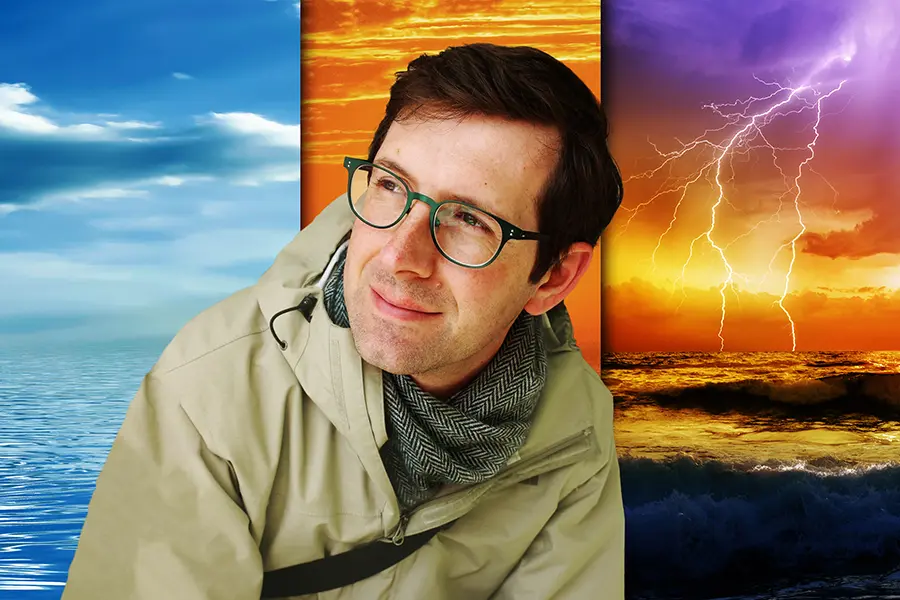
Oceans of Opportunities
Alumnus Mike Bueti’s modeling builds better hurricane and storm preparations
By Heidi Opdyke
Carnegie Mellon University alumnus Mike Bueti’s career has been fluid, much like the ocean models he creates.
As a senior scientist at Verisk, Mike uses high-performance computing to solve large numerical computer models of fundamental fluid and wave equations to predict storm surges.
“I just loved the beauty of wave equations and how you could get interesting insight into the physical properties of the world with this really elegant math,” says Mike, who graduated from Mellon College of Science in 2007 with a bachelor’s degree in physics. He went on to earn his Ph.D. in physical oceanography at the University of Rhode Island.
Working with meteorologists and statisticians who create historical and hypothetical hurricanes, he gathers data about past flooding and the present natural and built environment. He then builds a numerical model which can be driven by wind information in order to look at where storm surge risks exist.
“This is a gridded model,” Mike says. “You’re solving the shallow water physics equations at each grid cell, and we have a team that goes out and get the best topographic and bathymetric data, both subsea and on land, so we can see how the water flows when it hits land.”
The data analytics and risk assessment firm provides information for clients in government and industries such as insurance, financial services and risk management. As more data is collected, the modeling becomes increasingly better.
“One of the places we’re seeing changes is in 100 plus-year storms. The frequency and strength of storms are changing to a degree. Some of the storms we are seeing are more powerful, or in areas we haven’t seen impacted before.”
“One of the places we’re seeing changes is in 100 plus-year storms. The frequency and strength of storms are changing to a degree,” he says. “Some of the storms we are seeing are more powerful, or in areas we haven’t seen impacted before.”
With only have a century of well-observed storms, a few major events can change the statistical distribution significantly.
“Our statistical modelers are incredibly sharp and are pushing the envelope with how well they can represent hypothetical stochastic scenarios year after year, which is where a lot of our major improvements come from,” Mike says. “But also, we have more data and a deeper understanding of what is a black swan event versus a normal five-, 10- or 20-year event. Something we used to think of as a 100-year storm may not be. We just haven’t seen it in 50 years and are encountering a sampling bias.”
The work Mike does builds on the foundation he created at Carnegie Mellon, from the courses he studied in physics to the computer science classes he took.
“I didn’t major or minor in computer science at Carnegie Mellon, but if you enjoy working in computer systems and don’t take advantage of one of the very best computer science programs in the world to hone your chops, you’re wasting a huge opportunity,” he says. “I came out with this skill set of being a programmer and software engineer along with my physics training.”
His doctoral studies and stints in the tech industry honed those skills even further. He encourages students early in their career to consider how physics is about seeing the world as systems.
“It’s a way of thinking and approaching and solving problems,” Mike says. “If you can understand how to break a problem down and move forward with it, you can carry that into many places you wouldn’t expect to find a physicist.”